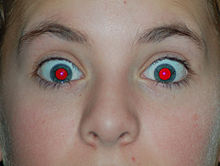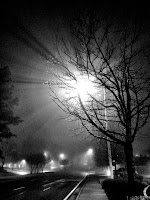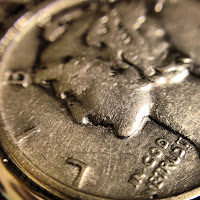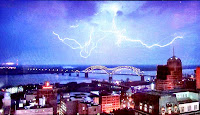 It's no secret...a tell tale sign of speedy photo posting is red eye. Not bloodshot eyes, but the kind of red eye that causes people to laugh and say things like, "OMG! She looks like she's possessed!" Quite honestly, I've heard that phrase so much I want to throw up. Seriously, I'll be right back...
It's no secret...a tell tale sign of speedy photo posting is red eye. Not bloodshot eyes, but the kind of red eye that causes people to laugh and say things like, "OMG! She looks like she's possessed!" Quite honestly, I've heard that phrase so much I want to throw up. Seriously, I'll be right back...Ok, I'm back, and I want to tell you how to a) avoid red eye and b) correct it if it happens.
Before I start I need to explain what red eye actually is. According to Wikipedia, it is the "common appearance of red pupils in color photographs of eyes. It occurs when using a photographic flash very close to the camera lens (as with most compact cameras), in ambient low light." The flash occurs so fast that it is actually reflecting off of the back of the eye because the pupil doesn't have time to close. Now that we know what it is we can plan on avoiding it before a photo is taken.
RED-EYE REDUCTION MODE (RRM)
Not all cameras have this, but if yours does by all means, enable it. RRM will either turn the flash on for a couple of seconds or flash 3 to 5 times to cause your subject's pupils to constrict. This minimizes the amount of flash light that will reflect back to the camera.
REPOSITION YOUR SUBJECT
This may not always be an option. You can move your subject from an area of low light to one of brighter light. This will cause the pupils to constrict and, hopefully, reduce the amount of red-eye. Any red-eye left from having the RRM turned on should be further reduced by doing this.
ANGLES ANGLES ANGLES
 |
| Subject's eyes cut at an angle, eliminating red-eye in a dark environment. |
Hopefully red-eye is no longer a problem. But, if it is, try the following:
SMARTPHONE APPS
Of course this will only work if you take the photo with a smartphone. There are some good apps out there, too many to list. Checkout Google Play or the iTunes store.
PHOTO EDITING SOFTWARE
After you get home from your event, you should immediately connect your camera to your computer and transfer your photos. Then you can open them in your photo editing software and remove the red-eye. You camera probably came with software to do this. If it didn't there are free titles out there. GIMP is a good one. I prefer Serif products.
PRINT IT OUT AND USE A BLACK MARKER (Last Resort)
This is old school but it works if you do it right. Simply take a black permanent marker and lightly draw over the red pupil. Voila! No more red-eye. Just be careful to not over do it. The photo will look unnatural. You may also need to shop around for just the right marker. Since prints aren't as popular as they used to be the markers specifically made to do this can be more than $25!
That's it! I hope those tips help! If you have any tips or suggestions of your own I'd love to hear them! Simply e-mail me a ande@geminimm.com.


















